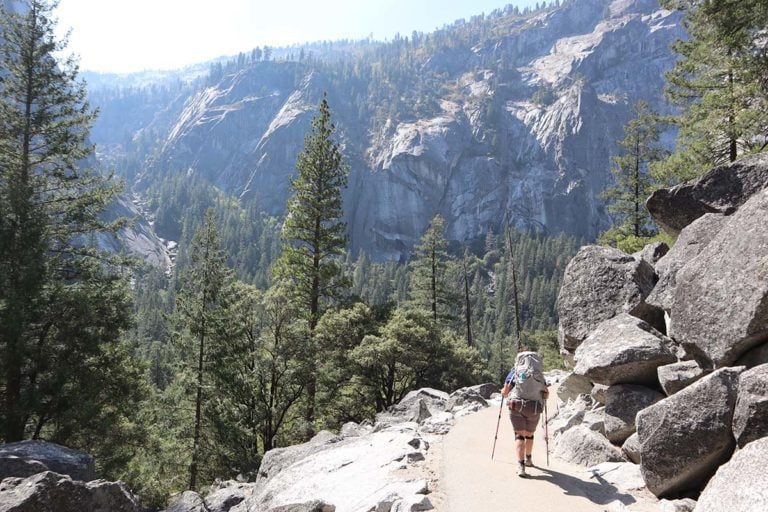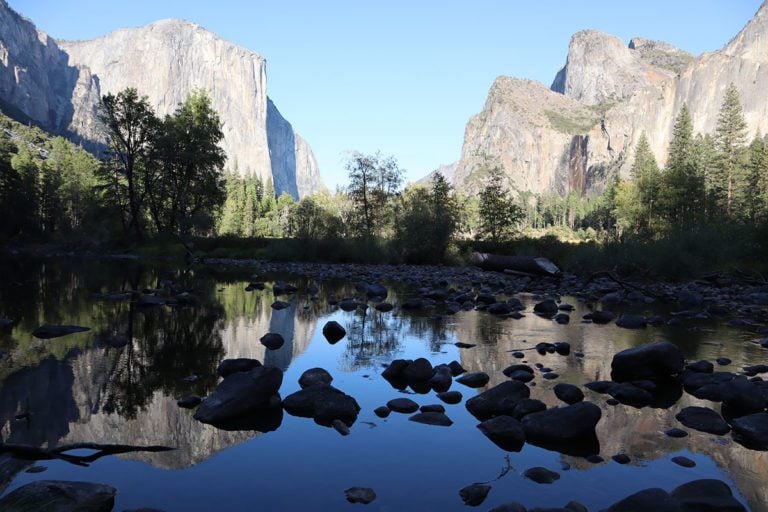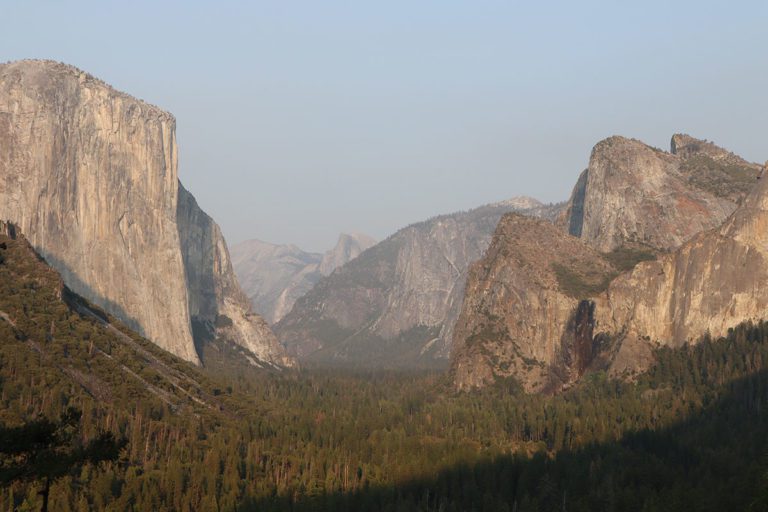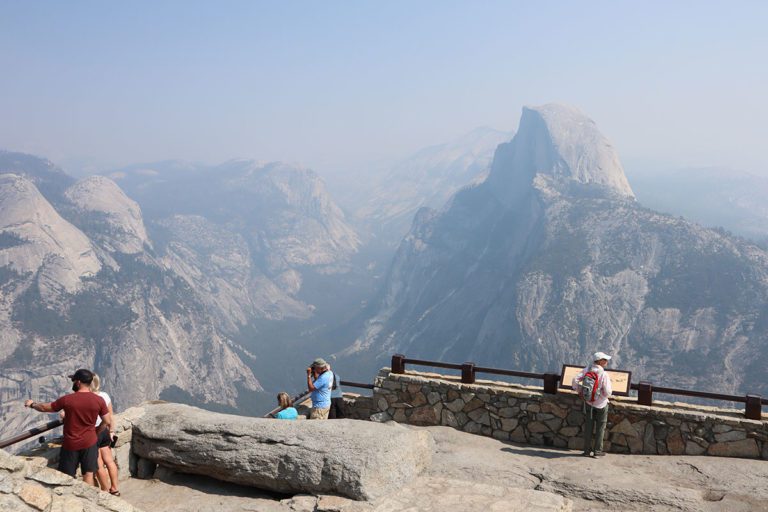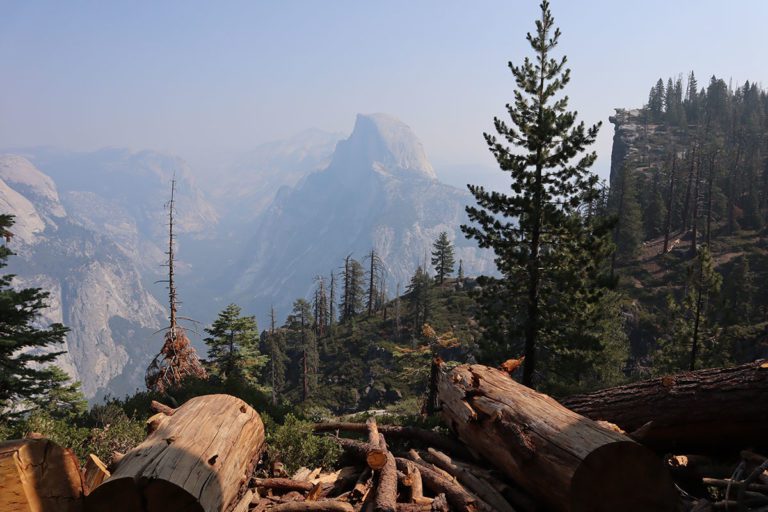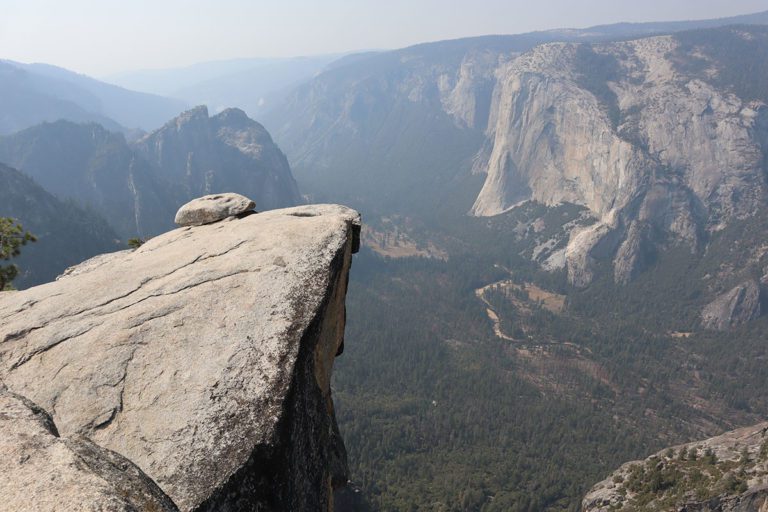The best time to visit Yosemite is during spring and early fall when the temperature is pleasant and rainfall is infrequent. However, spring does have an edge over fall.
Winter: Yosemite’s high elevation areas are prone to snowstorms and road closures. Tioga Road is closed from November to May and Glacier Point Road opens depending on road conditions. Even down in Yosemite Valley, nights will be freezing cold. On the plus side, Yosemite does transform into a winter wonderland.
Spring: the melting snow brings Yosemite Valley’s waterfalls into full power, along with a strong flow in the Merced River. The valley floor is painted green and dotted with blooming flowers.
Summer: it gets really hot in Yosemite Valley and wildfires are unfortunately becoming quite frequent in the Sierra Nevada. Summer months drive park visitation to its peak, while its waterfalls run dry and the Merced River slows down to a trickle.
Fall: especially towards the end of fall, Yosemite Valley is painted gold, orange, and red, as the trees prepare for winter. There’s moisture in the air and the days are getting shorter. This is a great time to visit Yosemite, especially after some rain when the valley’s waterfalls might have woken up just in time for your visit.
